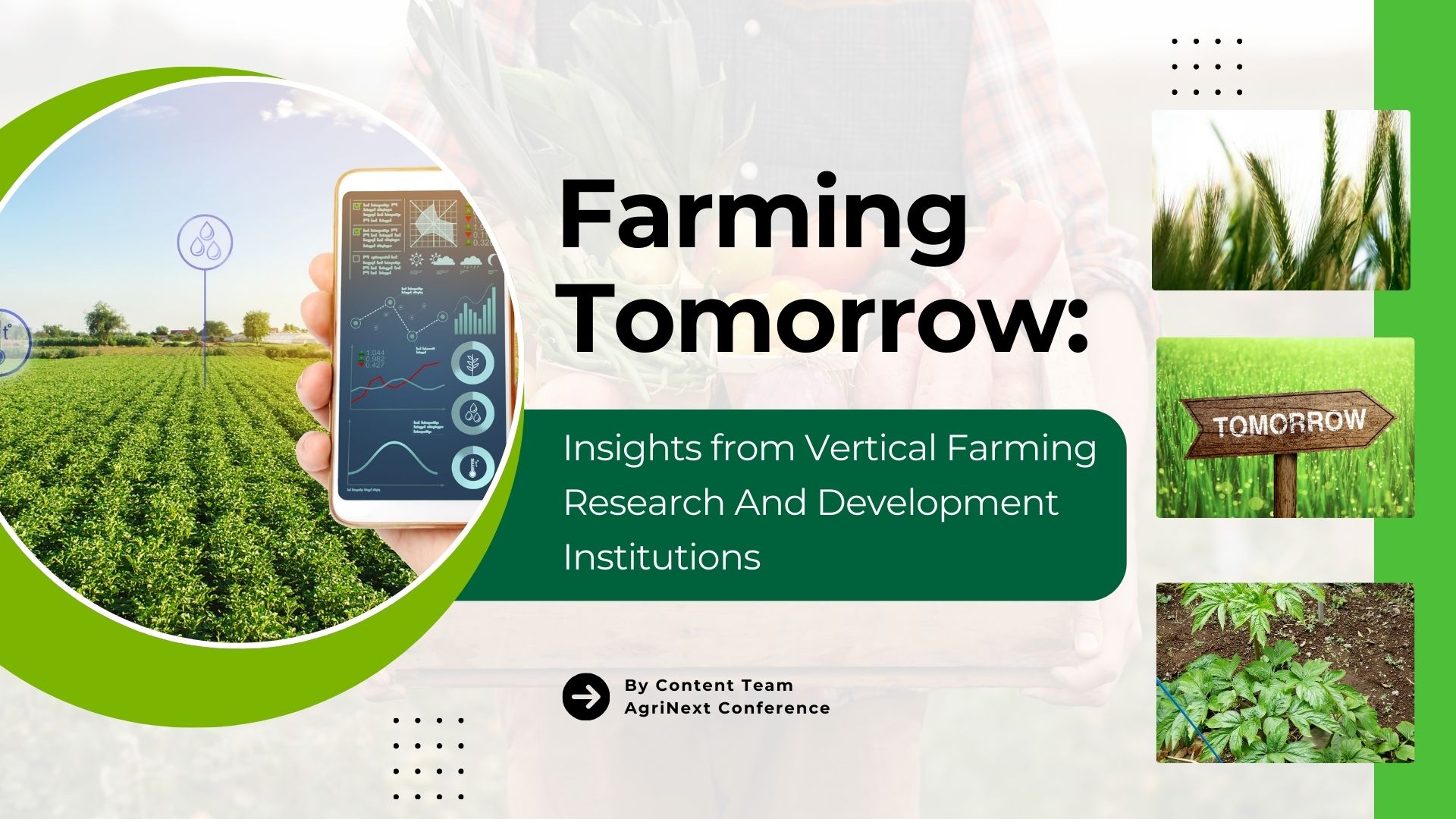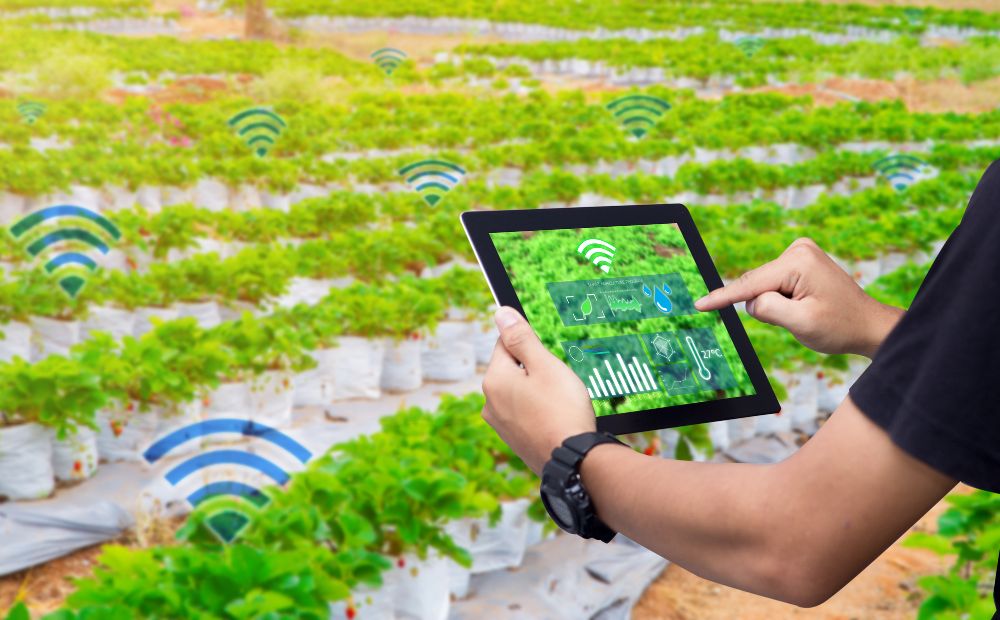
Vertical farming in its current state can provide access to fresh, safe, and sufficient food, independent of climate and location. In the decades to come, where overpopulation and severe planetary changes challenge our current way of life, vertical farming will become a necessary solution in global food production.
(Association for vertical farming)
Introduction
As the global population continues to grow and urbanize, the demand for sustainable and efficient food production methods has become more pressing. Traditional farming faces numerous challenges, including limited arable land, climate change, and resource constraints. Vertical farming, an innovative approach to agriculture, offers a promising solution by utilizing vertical space to grow crops in controlled environments. This blog explores insights from leading vertical farming research and development (R&D) institutions to understand the current state and future potential of this technology.
Table of Contents

Leading R&D Institutions in Vertical Farming:
Association for Vertical Farming (AVF):
The AVF is a global nonprofit organization that promotes vertical farming through research, education, and networking. They facilitate collaboration among researchers, industry professionals, and policymakers to advance the field of vertical farming. It’s mission is to create awareness and connect all stakeholders to advance the implementation of vertical farming.
Wageningen University & Research
Wageningen University & Research (WUR) in the Netherlands is a leading institution in agricultural research, including vertical farming. WUR conducts extensive studies on plant physiology, light spectra, and nutrient delivery systems to enhance crop productivity and resource efficiency. Their research also explores the economic feasibility and scalability of vertical farming systems, providing valuable insights for commercial applications.
Controlled Environment Agriculture Innovation Center
Several universities and research institutions have established CEA research centres dedicated to studying various aspects of indoor agriculture, including vertical farming. Examples include the CEA Research Center at the University of Arizona and the CEA Innovation Center at Cornell University.
Controlled environmental agriculture helps protect plants from disease and stress while providing ideal growing conditions for high-quality, quick-to-harvest food products.
The Controlled Environment Agriculture (CEA) Summit exemplifies the collaborative spirit that defines our mission. Industry leaders from all sectors of CEA convene to share lessons learned, best practices, research findings, and ways to help accelerate collective growth. As Scott Lowman, Co-Director of the Controlled Environment Agriculture Innovation Center and Vice President of Applied Research at IALR, aptly stated,
“It’s rewarding to see industry leaders from all sectors of CEA convene here to share lessons learned, best practices, research findings and ways to help accelerate our collective growth.”
International Center for Biosaline Agriculture (ICBA)
The International Center for Biosaline Agriculture (ICBA) in the United Arab Emirates is a key player in vertical farming research in the Middle East. ICBA focuses on developing sustainable agricultural practices in saline and marginal environments. Their research includes the use of advanced hydroponic and aeroponic systems adapted to arid climates. ICBA’s work aims to improve food security in the region by optimizing water usage and exploring the potential of alternative crops suited to harsh conditions.
Research on AI Automation in Vertical Farming
Until recently, traditional farming was more cost-effective than vertical farming. While some have succeeded in turning a profit from vertical farming, it often required creative marketing strategies. Fortunately, vertical farming is relatively easy to promote due to its sustainable potential and the premium consumers are willing to pay for pesticide-free, high-quality plants. This has justified higher pricing compared to traditionally farmed plants.
Recent advancements in plant science, particularly in LED technology and plant growth automation, have significantly reduced the costs associated with vertical farming. Ken Tran, a Principal Research Engineer with Microsoft Research and his mission is to help perfect new ways of growing food and feeding the world scientifically, sustainably, and profitably.
He highlights that vertical farming has become more efficient through the processing of large amounts of precise data in shorter time frames. This efficiency is driven by new AI technology, where sensors in plant growth systems gather extensive data, which is processed in the cloud. AI enables precise adjustments to grow lights, ensuring optimal plant growth and minimal energy consumption. Similarly, AI adjusts nutrient levels in growth systems, further enhancing efficiency and productivity
Global Benefits of Vertical Farming Research
According to the UN, the global population will reach 9.7 billion by 2050. This means there will be 2.3 billion more mouths to feed in the next 28 years. Most of these people will live in urban areas, raising the demand for food accordingly. Vertical farming research offers a multitude of global benefits, addressing critical challenges in food security, sustainability, and urbanization. By enabling year-round production in controlled environments, vertical farming reduces dependency on seasonal and climate conditions, stabilizing food supply and prices.It significantly decreases water usage by up to 95%, a crucial advantage in water-scarce regions.
Additionally, vertical farming minimizes the need for pesticides and herbicides, leading to healthier food and less environmental pollution. Urban vertical farms can cut down transportation costs and carbon emissions by growing food closer to consumers.
Research in this field also stimulates technological innovations and economic opportunities, creating jobs and fostering advancements in automation, AI, and renewable energy integration. Collectively, these benefits contribute to more resilient, efficient, and sustainable global food systems, essential for meeting the demands of a growing population and the challenges of climate change.
Key Insights from R&DTechnological Innovations
Research and development in vertical farming has led to significant technological advancements, such as:
LED Lighting: A focal point for vertical farming research teams around the globe is energy reduction. LED grow lights technology has come a long way in the last couple of years, successfully reducing energy consumption in vertical farming. Optimized light spectra for different growth stages increase energy efficiency and crop yields.
Automated Systems: Robotics and AI-driven monitoring systems enhance precision in resource management and reduce labour costs.
Integrated Pest Management: Biological control methods and closed-loop systems minimize the need for chemical pesticides.
Economic and Environmental Sustainability : Research shows that vertical farming can reduce water usage by up to 95% compared to traditional agriculture. Additionally, the proximity of vertical farms to urban centers reduces transportation costs and carbon emissions.
However, high initial setup costs and energy consumption for artificial lighting remain challenges that ongoing research aims to address.
Crop Diversity and Quality:Vertical farming allows for the cultivation of a wide variety of crops, including leafy greens, herbs, and strawberries. Research and development efforts are expanding to include staple crops like wheat and rice, which could revolutionize food production. Controlled environments also ensure consistent quality and year-round production, enhancing food security.
The Vertical Growth of Our Future Food Industry
Vertical farming is an innovative and rapidly growing segment of the agricultural industry, driven by the synergy between research and commercial interests. This modern farming method involves cultivating crops in vertically stacked layers, often incorporating controlled-environment agriculture (CEA) technology. The partnership between research institutions and private companies is crucial in advancing this industry.
Key Points in Vertical Farming Growth
Research and Development (R&D) Synergy
Investment in Science: Companies invest heavily in plant science research to improve yields, reduce costs, and enhance sustainability..This investment often drives major scientific breakthroughs.
Commercial Impact: These breakthroughs attract more companies to the industry, increasing competition and spurring further demand for innovative research.
Major Players and InvestmentsLeading Companies:
The US is home to some of the largest vertical farming companies, such as Plenty, AeroFarms, and Bowery.
Significant Investments:
Bowery Farming: Raised $300 million in 2021.
Plenty: Secured $140 million from SoftBank in 2020, following a $200 million investment from Jeff Bezos and others in 2017.
Notable Investors
Tech Giants and Entrepreneurs: Prominent figures and entities like Google, SoftBank, and Jeff Bezos have invested in these vertical farming ventures, demonstrating the sector’s potential and attractiveness.
Financial Perspective
The inflow of substantial investments highlights the economic potential of vertical farming. The funding enables these companies to expand their operations, invest in cutting-edge technologies, and scale their production capabilities.
The Future Of Vertical Farming
Vertical farming is positioned to play a significant role in addressing global food security challenges. By leveraging technology and innovation, this industry can produce more food using less land and water, making it a sustainable solution for future food production needs.In summary, the vertical farming industry exemplifies how research and business can collaboratively drive growth and innovation. With continued investments and advancements, vertical farming could revolutionize the way we produce food, making it more efficient, sustainable, and accessible.
Conclusion
Indoor plant growth and vertical farming will become a part of our future food industry. Right now, vertical farming research is hammering out the final kinks. However, it won’t be long before vertical farming is thoroughly commercialized. Insights from leading R&D institutions highlight the significant progress made in this field and the ongoing efforts to overcome existing challenges. As technology continues to advance, vertical farming has the potential to play a crucial role in building sustainable and resilient food systems for the future. By utilizing innovations in controlled-environment agriculture, optimizing resource use, and developing scalable economic models, vertical farming can contribute to food security and environmental sustainability on a global scale.
References:
•Association for Vertical Farming
•Wageningen University & Research. (WUR) Vertical farming
•International Center for Biosaline Agriculture•Controlled Environment Agriculture Innovation Center
Signup For AgriNext Conference Newsletter

